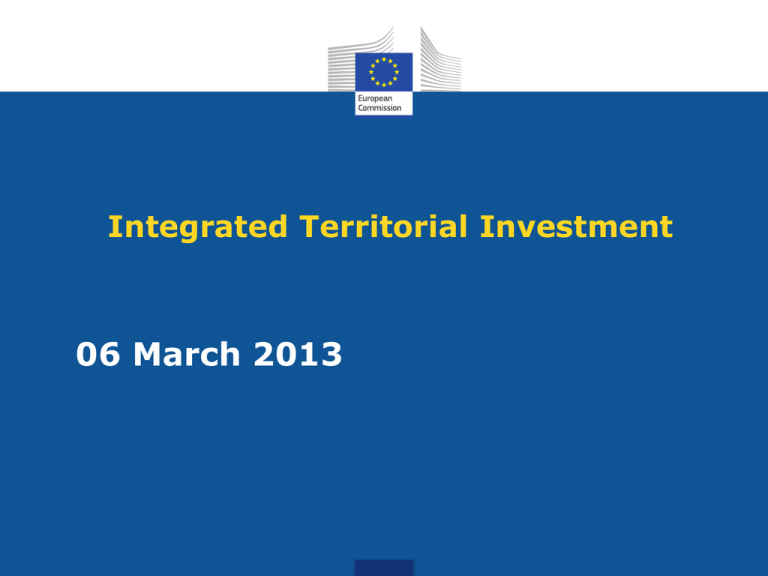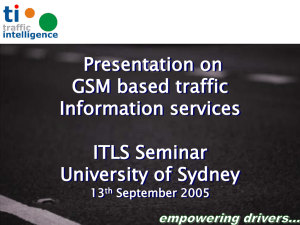Integrated Territorial Investment
advertisement

Integrated Territorial Investment 06 March 2013 Draft guidance • Based on Presidency compromise text – "nothing is agreed until everything is agreed" • The extent of delegation of tasks to urban authorities • The extension of ITIs to EAFRD and EMFF as proposed by the Council • The guidance fiche will be adjusted following the expert meeting Objectives • To provide a comprehensive understanding of the conditions set out in the legal framework • Addressing the questions that have already arisen • Main elements/sections • • • • • Basic features of ITIs Programming requirements Delegation of implementing tasks (+ audit and control) Monitoring and reporting ITIs within ETC programmes Basic features • A voluntary tool for Member States • Must be based on an integrated territorial strategy • Can cover any sub-national territory as well as multiple categories of regions • Draws on funding from at least two priority axes • Mono –fund or multi-fund [complementary participation of EAFRD and EMFF] • Can include any form of support (including FIs) • Can include elements implemented based on community-led local development Strategic programming requirements • Important to elaborate an approach that ensures the coordinated use of the ESI Funds • Partnership Agreement to set out the approach to integrated territorial development including the general approach to the use of ITIs – (types of) areas where ITIs will be used, the ESI funds to be implemented through ITIs, basic implementation and coordination arrangements between ESI Funds • Operational programmes to set out where and how ITIs will be used, the indicative (overall) financial allocation to ITIs from each priority axis, the arrangements for coordination between MAs concerned + elements related to integrated actions for sustainable urban development Delegation of tasks, control and audit • Delegation of implementation tasks is not mandatory (possible exception for integrated actions for sustainable urban development) • Delegation of MA and CA tasks=delegation of tasks to an intermediate body • All general rules and principles as regards the delegation of management tasks apply • The arrangements for delegation, management and control require careful consideration and coordination – simpler if the extent of delegation from all MAs is the same, if control and audit are coordinated Monitoring and reporting • ITI is an implementation tool, not an objective in itself • ITI must contribute to the achievement of the thematic objectives, investment priorities and specific objectives set out in the contributing programmes • Financial and indicator data is traced back to contributing priority axes • Specific indicators can be used at management level to assess the implementation of individual ITIs ETC and ITI • Use of ITIs is possible especially in CBC programmes • ETC specifies are very few – general rules and principles apply • Cross –border impact must be preserved • Delegation of implementation tasks – only to joint bodies (EGTC or other joint body) Written comments











